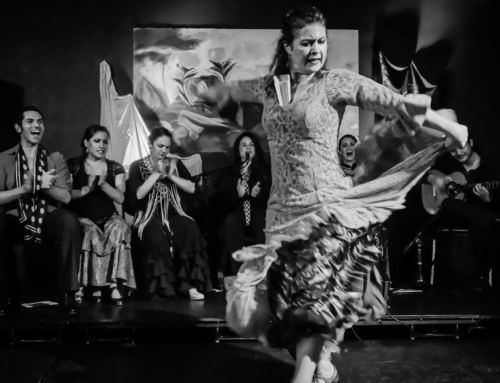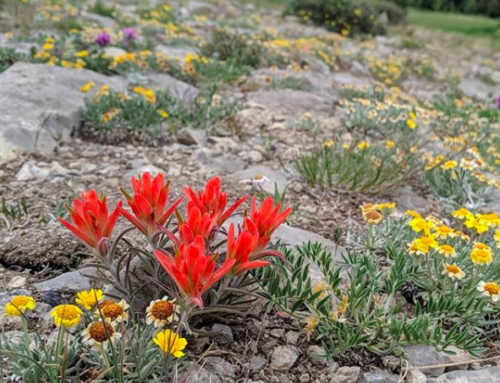Recently I was honored to have two high school choreography students call and interview me for a class project. They asked some outstanding questions that really made me think. And one answer I keep going back to…they asked what was the best advice I could give a young choreographer? My answer: Just keep making dances. Every day. Even short little dances in your living room. Don’t stop playing with movement and making work.
Guess who needs to take some of their own medicine?…Me, myself, and I. 🙂
I’ve really only recently become aware of the fact that I am a choreographer. Yet, I’ve been choreographing for as long as I can remember (though haven’t we all–dancers and non-dancers–but that’s a different blog post entirely). I loved making up dances in ballet. I also loved improvising. In a middle school talent show, I set most of my ballet solo and left the end structured, but not set so I could do what I felt in the moment. I always chose interesting music–for my Cecchetti Grade IV exam, I chose something in 6/8 time, and I remember the examiner was surprised by this choice, and asked me if I knew what time signature the piece was in–in fact, I did not, I just liked the music.
 |
| PC: Lisa Greenberg Performing at The Outlet Dance Festival at Grounds for Sculpture, NJ last month. |
I always choreographed my own solos for flamenco too when I was first starting out as a soloist with Alma Flamenca some 13 years ago. At that time, my choreography was “cutting and pasting” steps, which now I don’t consider choreography so much as arrangement. But it was a start. I always had a story behind the movements, something to say, and I chose which movements could best express that story. I also always made steps “my own”–taking the intention and technique of the step and making it work on my body with my personality, changing details in the step to work better for me or to be more pleasing to my eye. Little did I know these were the first steps to choreographing.
I used to think all dancers were choreographers, as the two roles had been so intertwined for me through the years. As some of my work has been featured in dance festivals and people call me to set choreography for them, I’m finally starting to realize that I am a choreographer, and in fact, right now, I am more interested in that than in performing. And I’ve come a long way from cutting and pasting steps, or even altering others’ steps.
Process, process, process….and why I need to take my own advice:
Sometimes it can be really hard to make work if you do not need to. Luckily, recently I’ve had lots of opportunities to choreograph, for both myself and others. But that’s not always enough. When I first finished my MFA, I felt empty not being in class and exploring new movement every day. So for several days, I made dances every day, wherever I happened to be.
Then I started to feel stuck. I hated all my movements, they all seemed the same. Different day, same gestures. How to break the cycle, discover, explore, create, go deeper into movements? In the studio, I seemed to just get stuck. (Another question the students asked me was what I do when I feel stuck, and I happened to be feeling very stuck the week they called). Finding new entry points to movement does not have a clearly labeled path, and there’s no right answer to getting unstuck. But looking for those new entry points, new perspectives, is part of the process. As soon as you open yourself up to that, well, you’re not stuck anymore. Even if you’re in the same place, you’re looking in new directions. For me, this can mean taking a different dance class, seeing others’ work, reading books, going to a museum, finding new music–there exists endless possibilities. But….
…nothing can take the place of making dances. All of that research helps. It helps especially in creating new movement scores, but only if you take the time to move through those ideas. Even the simplest dance of how I feel at the end of the day once I’ve brushed my teeth and I’m about to go to bed in movement form. It’s not a dance for anyone but myself, but it keeps me creating and exploring.
And then how do you teach choreography?
It’s such a personal process, and it can change depending on the project. I really believe choreography has to be taught in conjunction with theory, criticism, and history–working in a vacuum is never a good idea. Recently, theory has really been inspiring my work. Choreographing also depends on if you are aiming to create something to be performed or just making something as a process and research in and of itself. Endless exercises exist to help create movement, but a big part of it is the creative habit (Yes, I am referring to the book by Twyla Tharp), and the constant search for new entry points and ways of deepening a work and going beyond the surface level, and that can be different for every maker.
Breaking out of old habits becomes a big part of exploring new movement. For me, cutting and pasting is not choreographing. In music, they call that arranging, which is different than composing. Although we do not have that terminology in dance, I wish we did. There’s nothing wrong with arranging, and it’s an art form in itself, but it’s not choreographing–which is also not directing, by the way.
Currently Reading:
I am currently reading Traces of Dance, about how choreography can be and has been written down. And it also has beautiful photos of choreographer’s notes. Great read for anyone interested in theoretical side of choreography!




Leave A Comment